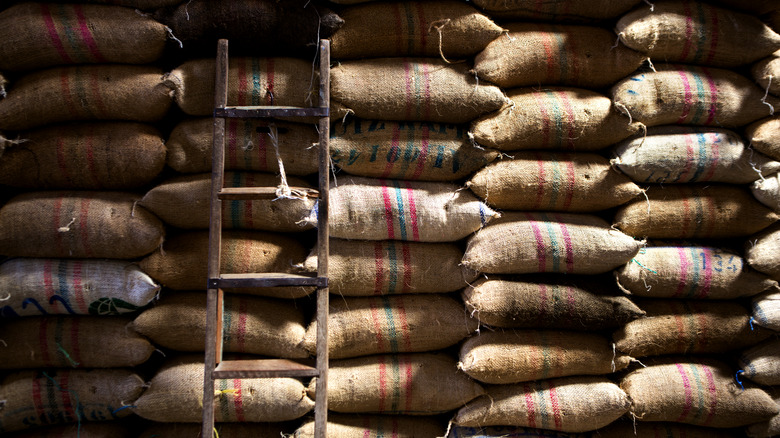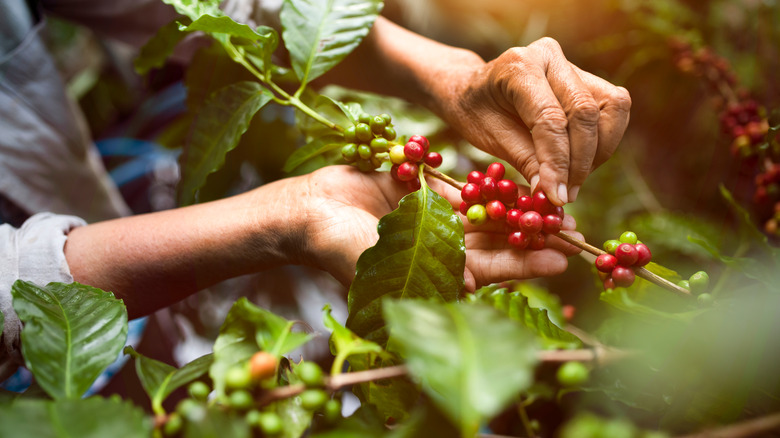What Vietnam's Coffee Bean Shortage Means For Consumers
How much do you prize your morning cup of coffee? Many of the java lovers among us relish our cuppa enough to go through elaborate rituals — such as setting up the timed coffee maker the night before, so the joe is already ready when we get out of bed the next day. If this is you, then there might be something about coffee that's been making you balk lately, and that's its price. Since late 2019, factors such as a severe drought in Brazil, the world's largest coffee producer, have caused the price of coffee to skyrocket (via Insider).
According to data compiled by Tasting Table, the average U.S. price for a pound of ground coffee was $4.17 in October 2019. By August 2021, its price had increased to $4.73 per pound, and in June of this year, the price per pound had leaped again to a whopping $5.79 — an increase of 38.8% since late 2019. A coffee habit is definitively becoming a luxury, and waning stocks of robusta beans in Vietnam aren't helping matters by pushing global prices even higher.
Vietnamese coffee producers have tended to hoard their beans
We've all been known to hoard something, whether that's love letters from our highschool sweetheart or those plastic bags from the supermarket that we swear we'll use instead of Ziplocs. And in Vietnam, according to Vietnam Briefing, it's robusta coffee, which is routinely hoarded by coffee farmers that prefer to hold on to their coffee crops, instead of selling them right away, in the hopes that coffee prices will go up and they'll be able to make a bigger profit.
But now, according to Bloomberg, those coffee hoards are finally dwindling, pushing the global prices of robusta beans up. This is a development that won't come as welcome news to coffee drinkers, who have already gotten used to paying more for beans in recent years.
As explained by the outlet, robusta coffee, a different species of the coffee plant (as opposed to arabica) that makes up about 40% of the world's supply (via Bean & Bean), has been growing in popularity in recent years, and is especially utilized by makers of instant coffee such as Nestle. Better suited to growing areas affected by climate change, since the plants are more, well, robust (via Reuters), robusta beans are heavily cultivated in Vietnam, the world's largest supplier of robusta.
Vietnam's reserves of coffee are dwindling
According to Bloomberg, supplies of robusta beans that have been hoarded by farmers for years are finally dwindling, and are projected, by this September, to only amount to half of what was in storage in the country last September. Combined with a reduced output of Vietnamese beans that's predicted for 2022 to 2023, the news is pushing robusta prices ever higher. After a 10-month low, global robusta bean prices have surged 17% since mid-July.
Less expensive to grow and harvest than arabica, robusta beans are typically cheaper for both coffee chains and consumers to buy, a trend that has worked in the favor of producers of the beans over the past few months of rampant inflation. Bloomberg states that robusta is in demand for coffee drinkers looking to reign in their spending — but with some of the biggest coffee-producing countries in the world currently suffering from drought, frost, and rain, dwindling output coupled with increased demand could cause this type of coffee to become excessively pricy, as well.


